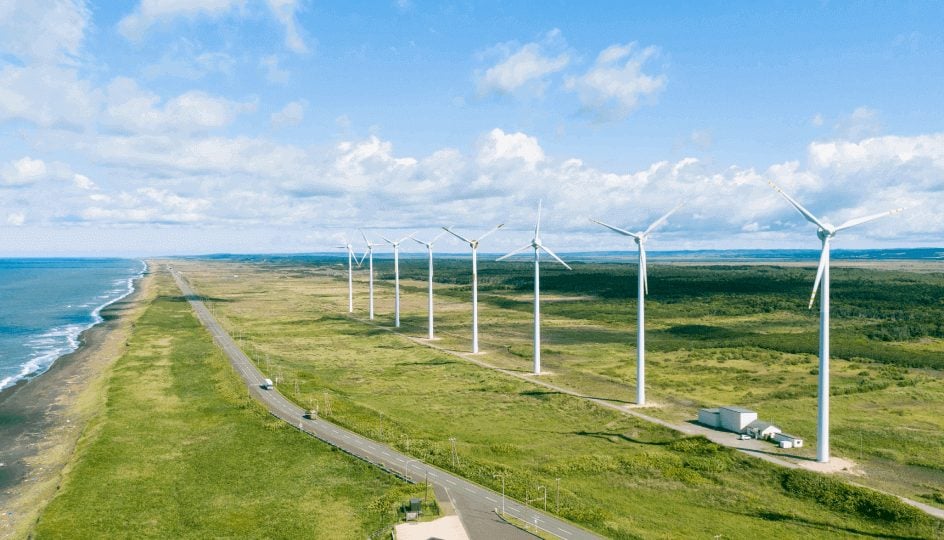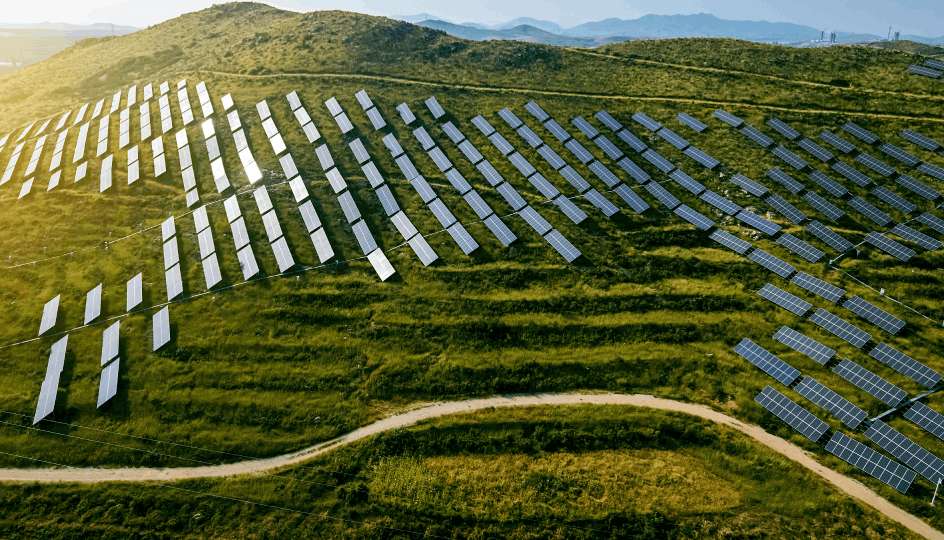Funding the future - investing in Asia’s rising renewables sector

Asia has seen a remarkable recent shift in its energy landscape. Countries are harnessing different sources of renewable power, creating a promising environment for investors seeking sustainable ventures. In this article, we explore the structures being deployed to manage the flow of funds into the renewables sector – and the best practices that have emerged as a result.
Asia’s renewable energy sector is on the rise, with investment in the region’s renewables generation expected to double, to US$1.3 trillion across the next decade1.
However, fund managers must navigate a complex investment environment to capture the best opportunities. As discussed in a previous article, Asia’s governments have different approaches to fuel investment in the sector, including rolling out incentives to lure private sector investors.
But, given the multifaceted nature of Asia’s markets, the patterns in the flow of funds and the most effective structures for renewable investments differ between countries. With that in mind, let’s explore the current state of play – taking a deep dive into the investment climate and best practices of six major Asian jurisdictions.

The Philippines
Over the past few years, the Philippines’ renewable energy industry has progressed at an extraordinary rate. In 2021, HSBC Global Research declared the jurisdiction the second-best investment destination for renewable energy after Vietnam.
And more recently this year, nine Chinese energy companies pledged to invest roughly US$13.76 billion, to participate in the Philippines’ development of renewable energy, energy storage systems and off-grid power supply systems.2
Locally, Aboitiz Power, Ayala Corporation and Solar Philippines are among the more active investors in renewable energy, while authorities have also leveraged stock market appetite among retail investors to propel the sector.
From government contracts to special purpose vehicles (SPVs), there are several structures open to those looking to invest. But the latter are a particularly effective option and are either set up by one corporate or multiple corporations, with the aim of establishing a subsidiary or a joint venture (JV).
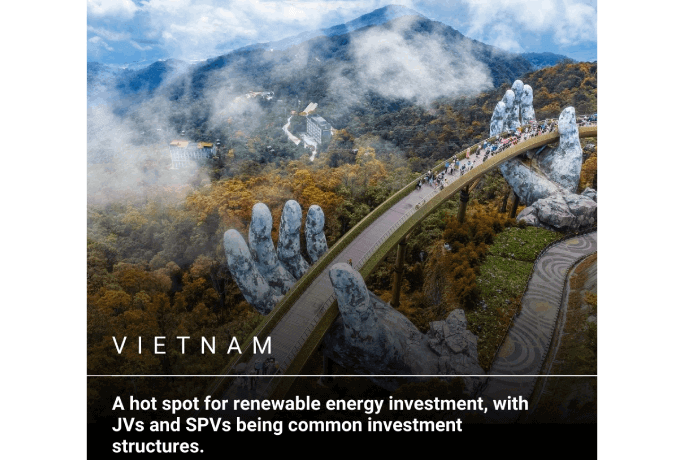
Vietnam
A hotspot for renewable energy investment, Vietnam received US$27.2billion in total foreign direct investment (FDI) in 2022. Nearly US$5.5 billion of that was allocated to renewable energy, with investors favouring projects in the solar and wind power industries.
Fund flows into Vietnam reflect its important role in boosting Southeast Asian connectivity. A notable example is Thailand’s Super Energy Corporation, having made its first renewable investment in the country in 2017. Another is the June 2023 stake sale of Super Energy Corporation’s Vietnamese solar unit to Philippine energy major, Acen.
Renewable energy investments in Vietnam can be made through different legal structures. Like other countries, JVs are a common tool, as are the use of SPVs.
Alternatively, foreign investment firms can set up a fund or use capital markets as a financing route, as Vietnam’s still nascent green bond market steadily gains ground.
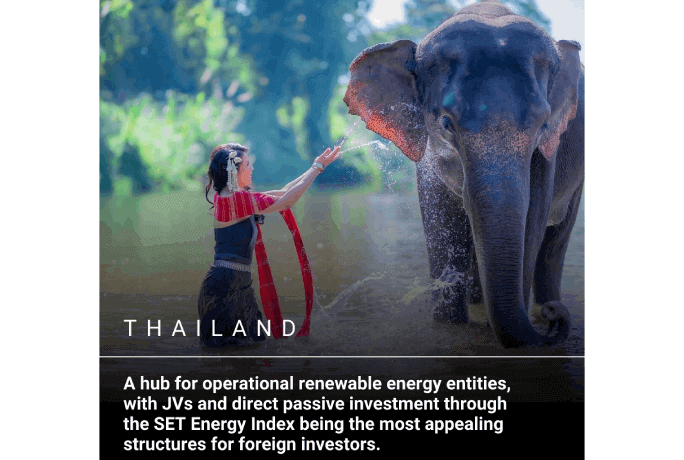
Thailand
With a relatively appealing corporate income tax rate of 20%, as well as stable local transmissions lines and infrastructure, Thailand has quickly emerged as a largely onshore hub for operational renewable energy entities. When it comes to funds flow, domestic investors are among the main winners, with Thailand imposing a capital gains tax on investors upon exit, as well as restrictions on foreign business activities (including on equity and land ownership). As a result, foreign investors lean towards setting up funds and offshore entities in locations like Singapore or the Netherlands.
When it comes to the best structures for investment flows, JVs are the most appealing to foreign investors here, while direct passive investment through the Stock Exchange of Thailand (SET) Energy Index – which tracks the performance of the 15 largest energy companies listed in Thailand – is another option.
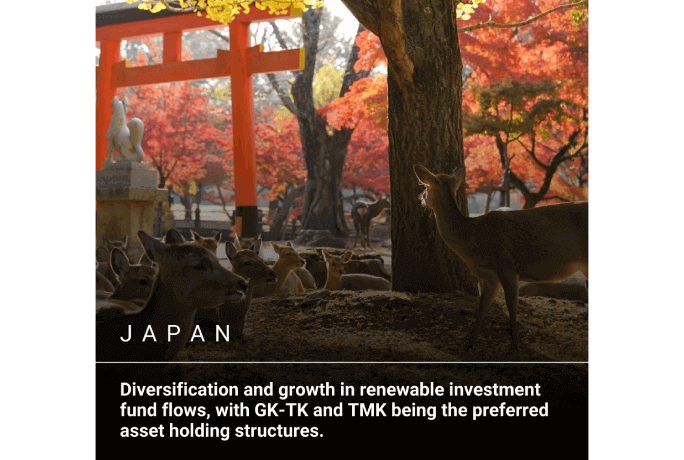
Japan
Japan has witnessed both diversification and growth in renewable investment fund flows in recent years. The flow of money has taken different forms, including listed and unlisted infrastructure funds, and direct investments from power users.
Public and private sector financial institutions, as well as participants in the solar industry, have launched unlisted infrastructure funds, while green-conscious corporates across sectors have pumped in money into on-site and off-site power purchase agreement (PPA) schemes.
Listed infrastructure funds, meanwhile, initially gained traction in 2015. But the number of listings has declined over the years, raising questions about the long-term sustainability of this funding method.
When it comes to asset holding structures for renewable investment, the preferred formats are GK-TK (which stands for godo kaisha-tokumei kumiai in Japanese), whereby investors put in money as silent partners into an SPV, and TMK (or tokutei mokuteki kaisha) – which is similar to a joint stock corporation structure – with investors having decision-making rights.3

Singapore
Singapore’s investment climate for renewable energy is characterised by a favourable regulatory environment, a solid reputation for stability and an established infrastructure.
The government’s commitment to green finance and sustainable development – including through its solar panel deployment initiative SolarNova and the Sustainable Singapore Blueprint – have created a conducive environment for global and regional funds interested in renewable energy projects. Funds have mainly stuck to the tried-and-tested SPV structures or the use of subsidiaries to manage these assets. SPVs have proven popular as they ring-fence the assets and liabilities of the project, providing a clearer legal structure for investors.
Trusts in both real estate infrastructure investment are also among the investment options for renewable energy projects, while Singapore’s green bond and project financing market also offers further opportunities.

Malaysia
Driven by the Renewables Energy Roadmap of 2021, Malaysia now sits at the forefront of propelling renewables investment in the region. The roadmap established ambitious targets – with the aim being that renewable energy will meet 31% of national energy needs by 2025 and 40% by 2035.4
In Malaysia, the authorities have emphasised leveraging the fund-of-funds (FoFs) structure to support renewable energy projects, with the involvement of financial institutions, investors, commercial banks and funds. The advantages of FoFs include diversifying the investor base and investor risk across assets and lowering financing costs.
Malaysia’s credentials as an Islamic finance hub also prove beneficial in attracting renewable energy investments from Sharia-compliant investors, while the availability of ample solar and biomass resources enhances its investment appeal.
Future potential
The investor climate for renewable energy in Asia is charged with promise and potential. Governments are recognising the importance of renewable energy sources, setting the stage for substantial growth in the sector in the years ahead.
The investment opportunities are compelling for funds seeking stable, long-term returns – all while being part of Asia’s renewable energy transformation.
How can TMF Group help?
We can provide detailed guidance and support on regulations around renewable energy investment in Asia. Contact us today.
1 Asia Pacific renewables generation investments could hit US$1.3 trillion by 2030 | Wood Mackenzie
2 DOE names 9 Chinese firms with $13.7-B investment pledges | Philippine News Agency (pna.gov.ph)
3 Basic structure of real estate finance in Japan - Lexology
